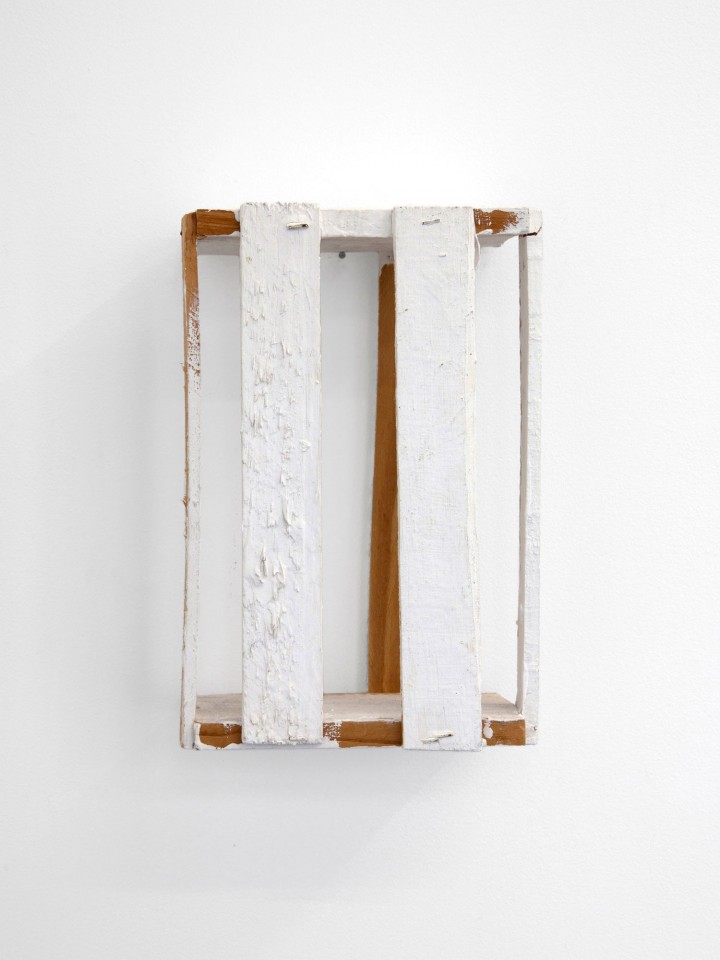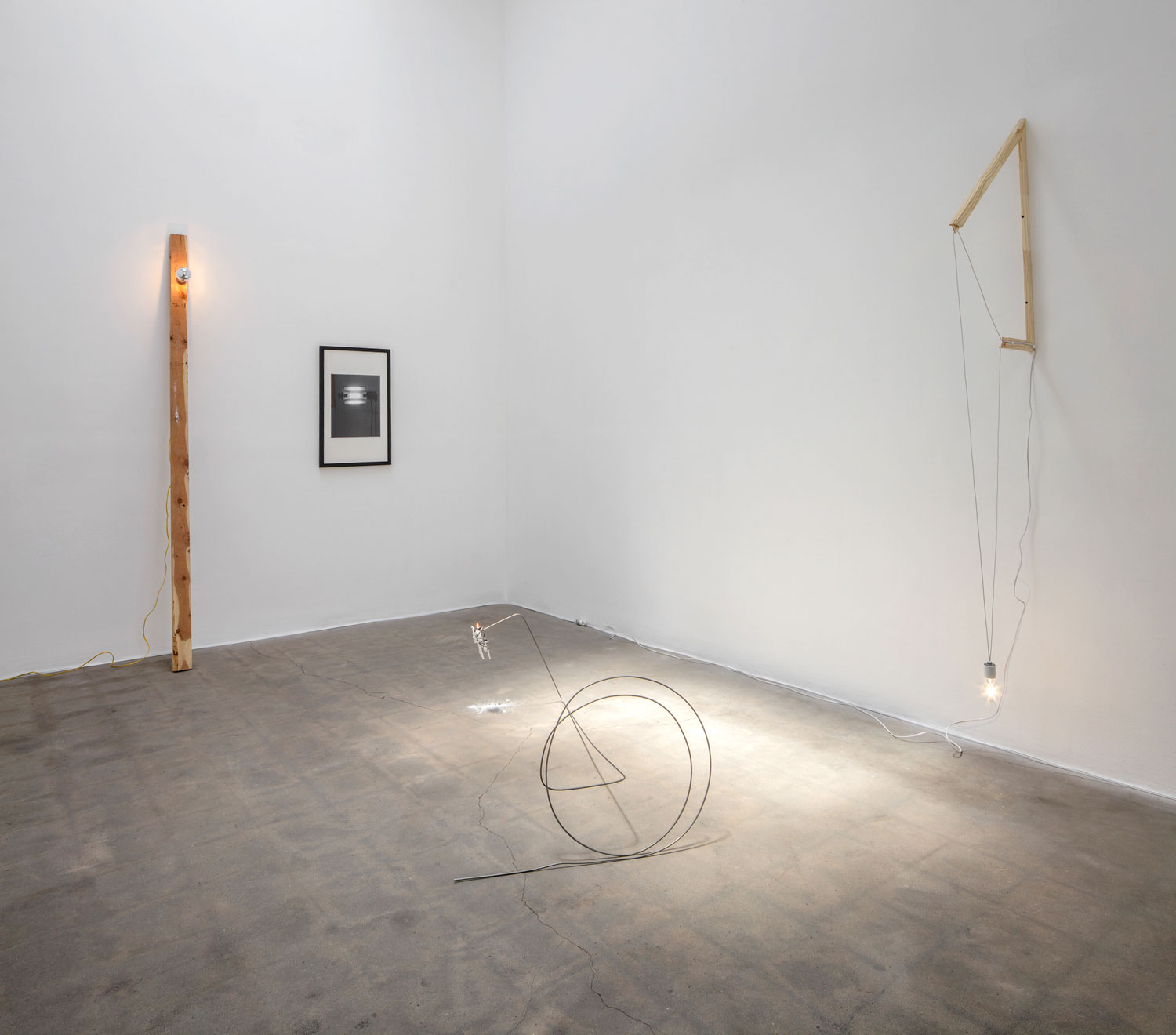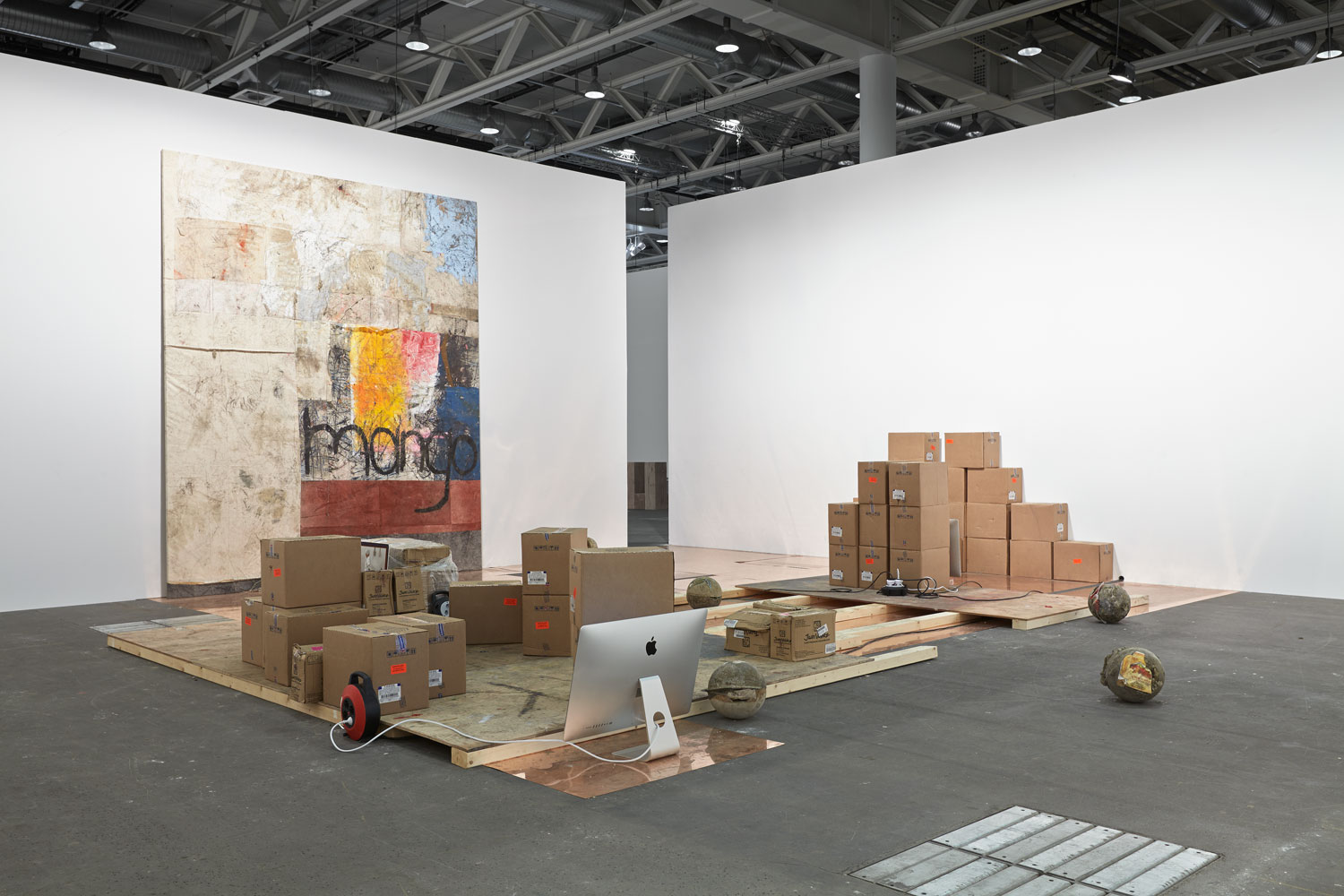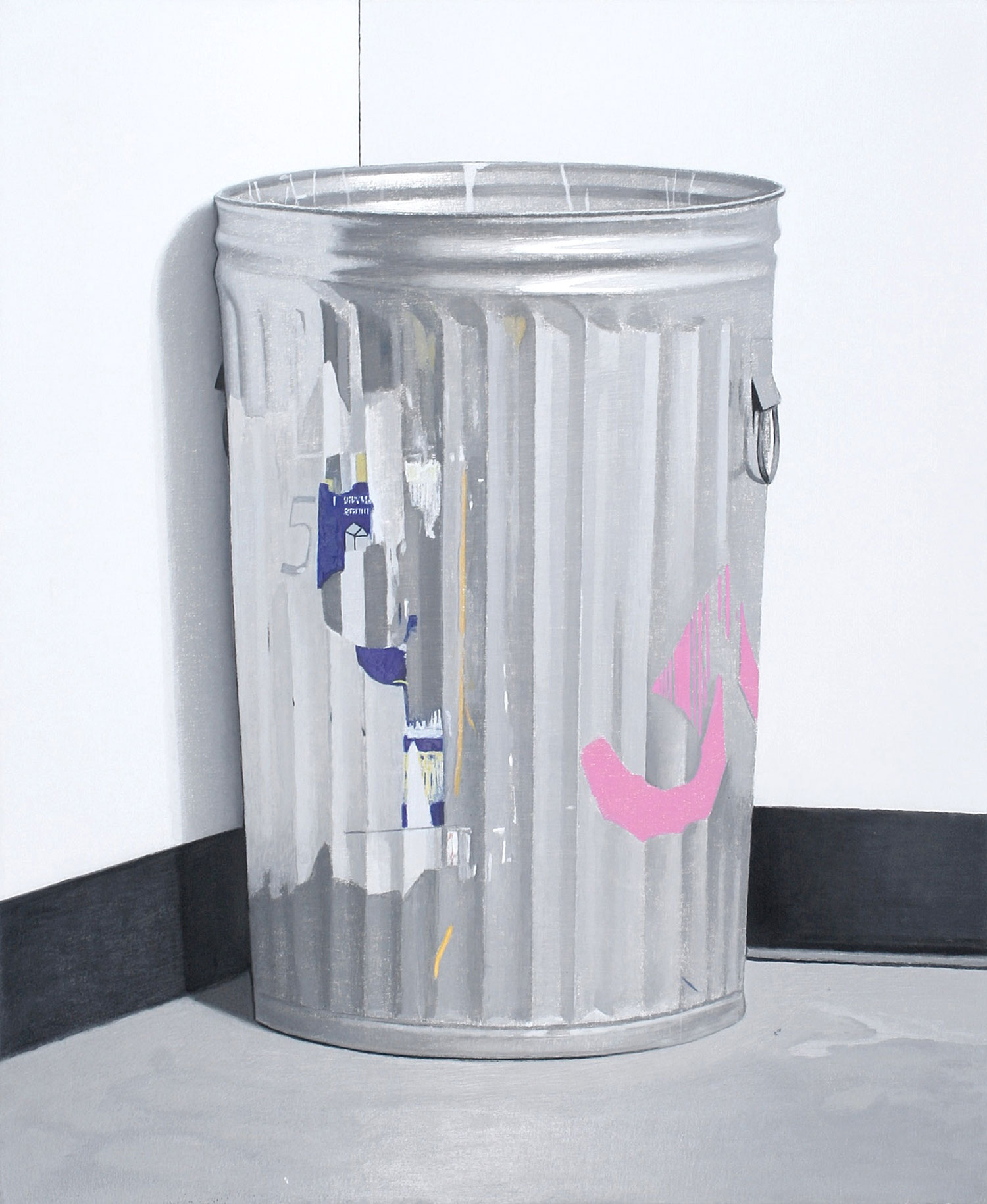
Fernanda Gomes travels very lightly. She has her luggage down to one or two small bags for some technological essentials — camera, iPad, phone. When I met the Brazilian artist in London earlier this year, she gave me a small Samsonite suitcase that she was keen to jettison — she is continually editing her existence down to the bare minimum in order to move unencumbered through the world. This fierce, ruthless and ongoing editing process also figures in her installations, which are things of delicate sensitivity. It takes a lot to do a little — to use sculpture to create more space rather than less, to tease things open, to let them be light rather than weighing them down.
A recent Gomes exhibition at Alison Jacques in London was extremely minimal — the room appeared almost empty, save for the fact that there were in excess of twenty works in the space. All the works were untitled and from 2013, and were chiefly made from materials that were either white or had the texture of wood. Some works were barely noticeable: a streamer of cigarette papers, carefully stuck together in a neat row and hanging from the ceiling by an almost invisible thread, could only really be noticed when it waved softly in the breeze when the gallery door was opened. Works on the back wall of this pristinely bright, boxy gallery in Fitzrovia were comprised of small pieces of wood nailed together at right angles to make what seemed to be open boxes or partly made frames, some painted white and some left bare. On the opposite wall was another set of wall-mounted wooden batons, each positioned as a straight vertical or horizontal line but placed in relation to the others so that the echo of the square, the cube, the box, the frame, remained.
A dialogue between objects, such as cigarettes and pencils, began to emerge. The cigarette papers suddenly seemed more like wood than they usually do, while the bamboo suddenly seemed more like paper. Each object became universal and tool-like. Several of the works appeared worn, like driftwood; indeed, many of these objects are carried around by the artist in a kind of small toolbox of works. When I visited the show she opened a small wooden box that was part of the exhibition, to reveal that it contained several smaller pieces of wood.


As she did in her show at Museu de Cidade in Lisbon in 2012, and during her contribution to the São Paolo Biennial that same year, Gomes chose to occupy the space for a number of weeks, treating it as her studio and slowly coaxing the exhibition into being. In this way the artist searches for the slim area, as though in a Venn diagram, in which her work and the gallery commingle. For example, a slender piece of bamboo, bent precariously under its own weight, was placed in a long joint in the gallery floor — an architectural detail I had failed to notice until this intervention. Elsewhere, a rubber ball was covered in white paint, and two Ryvita crispbreads had been placed together like a sandwich with gold leaf hidden between them, suggesting the beauty hidden in the most mundane objects. I couldn’t help but associate the work with Roni Horn’s Paired Gold Mats, for Ross and Felix (1994-5), in which two sheets of gold leaf were placed one on top of the other in dedication to Felix Gonzalez-Torres and his lover Ross. Indeed, Gonzalez-Torres remarked that this work was “everything a good poem is: precise, with no baggage, nothing extra.” A lack of baggage, as we know, is imperative to Fernanda Gomes.
Implicit London references seemed to seep into the works. Smoking, money, domesticity, game-playing, sharp lines, a cool glass of water. By contrast, in an exhibition last year at Casa de Cultura Laura Alvim in Rio de Janeiro, it was the sea that made its way into the gallery, coating the artist’s sculptures in salty spray, while a sculpture that formed a kind of kite shape swayed in the breeze and dust.

Gomes, who is based in Rio, has been making work since the late ’80s. Following some international attention early on, it has taken time for her work to gain recognition in recent years. This new attention is perhaps due to the critical reinvigoration of key Brazilian predecessors from the Neo-Concretist movement, such as Lygia Clark and Lygia Pape, who have become so influential in recent years, and have also pulled associations with Brazil away from color, for instance, or the Tropicalia movement. There is something in Clark’s “Matchbox Structures,” for example, that resonates with the compact boxiness and minimal aesthetic of many of Gomes’s works.
We notice a space most fully when we first walk into it: the crack in the wall, the particular light, the colors of the floor, the position of the building in relation to its environs. Our attention is focused in these early minutes in a space, and yet the more time we spend there, the less we tend to notice. Gomes’s work gifts back to us this early attentiveness that has slipped away. With such interventions, delicately based on lines and geometric shapes, the form that comes quickly to mind is punctuation. Gomes’s sculptures provide a way of seeing and experiencing space that facilitates pauses for breath, breaks, annotations, pointers and emphases.

And while this is indeed an analogy that makes some sense, Gomes’s work sent me looking for poetry, which is rarely my impulse when thinking through the work of an artist. “The poetic” is fragile terrain to walk on when discussing artwork. But there’s something in the way that Gomes’s work points to the gaps between things in a very condensed fashion, and the artist’s own recourse to the term, that makes the analogy unavoidable. I rifled through a few poetry books, trying to find something that expressed the artist’s strategy for dealing with “things,” trying to bring out their basic “thing-ness.” I found a poem by Charles Simic called The White Room (1990), in which the writer searches for the transcendental or godlike in the world of things. The poem ends with these two stanzas:
Gods disguising themselves
As black hairpins? A hand-mirror?
A comb with a tooth missing?
No! That wasn’t it.
Just things as they are,
Unblinking, lying mute
In that bright light,
And the trees waiting for the night.
The sense captured in these lines, of things lying without baggage, without any real reference to what is outside their own natures, characterizes Gomes’s sculptures. It is a reminder of our tendency to treat objects as symbols of something, arbiters of something, signals of desire or emotion, arrows that point elsewhere. Things can easily be weighed down with a litany of references. And yet here they seem only themselves.





